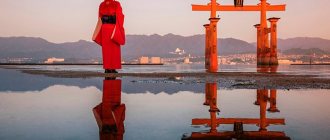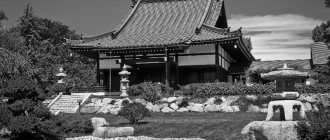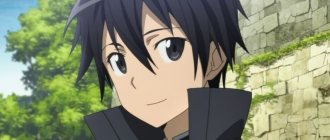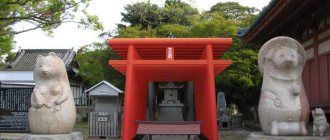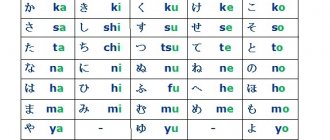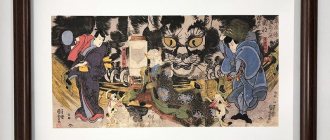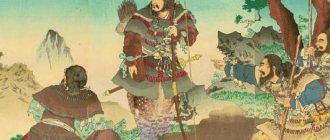Goddess of creation
Kunitokotachi and Amenominakanushi, the first gods, brought Izanagi and Izanami into existence. These two newly summoned divine beings were tasked with creating the first earth. They were given a special spear decorated with precious stones, which was called Ame-no-nuhoko. Izanagi and Izanami both went to the bridge between earth and sky, Ame-no-ukihashi. There they churned the sea with a spear. Onogoroshima (“self-forming earth”) was created from drops of salt water that fell from a spear as the sea churned. They then made this island their home.
God of destructive fire
Kagutsuchi, the god of fire, was also the child of the divine couple. He burned his own mother with his fiery essence. His father Izanagi became angry. He could not bear the death of his wife and wife, so he cut off the head of the son who killed his mother. Blood flooded the earth and gave birth to even more spirits, among whom were the thunder gods, mountain gods and the dragon god. The Japanese considered Kagutsuchi the progenitor of many powerful gods who created iron and weapons. The god of fire was the destroyer of buildings, especially wooden ones. There are many religious rituals associated with it that pacify it.
Marriage
Wanting to create a couple, Izanagi and Izanami built Ame-no-mihashira ("pillar of heaven") and built the palace of Yahiro-dono. Izanagi and Izanami walked around the column in opposite directions, and when they met on the other side, Izanami spoke first in greeting. Although Izanagi didn't think it was the right thing to do, they made love anyway.
They had two children named Hiruko and Awashima, but they were not considered deities due to their deformity. They put the children in a boat and sent them out to sea, and then asked the other gods to answer what they had done wrong. They were told that the male deity had to be the first to say greeting during the marriage ceremony. So Izanagi and Izanami walked around the column again, this time Izanagi spoke first when they met. And their marriage was finally successful.
After their remarriage, they gave birth to many healthy gods representing aspects of nature such as mountains and rivers, collectively known as Kamiumi, as well as the eight islands of Japan, collectively known as Kunimi; Awaji, Iyo (later Shikoku), Ogi, Tsukushi (later Kyushu), Iki, Tsushima, Sado and Yamato (later Honshu), they had six more islands and many deities. However, during the birth of the fire god, Kagu-Tsuchi Izanami was burned alive.
God of the seas and storms
Susanoo, god of seas and storms, another brother of Amaterasu. It came out of Izanagi's nose. His appearance was very disheveled, and his character was quarrelsome. Susanoo was constantly plagued by mood swings. This manifested itself in storms and bad weather. He was both benevolent and unkind. In Japan, located on the islands, there are many shrines dedicated to this god. Susanoo often fought and defeated the dragon. He cut off 10 heads of the monster and drank its blood. At the same time, he was also a negative god. He destroyed his sister's rice fields and even killed her servants.
Parting
After Izanami was burned and buried on Mount Hiba near Shimane Prefecture, she found herself in Yomi-no-kuni, the land of the dead. Her husband, Izanagi, sought her out there, but although she asked him not to look at her, he lit a torch and saw her rotting corpse, which forced him to flee. Angry at him, she sent a crowd of ugly female spirits, warriors and the eight thunder gods after him. But Izanagi managed to escape from the underworld and blocked the entrance with a boulder. Izanami shouted that if he left her, she would kill 1000 people from the earth every day, while he simply replied from the other side of the boulder that he would make 1500 be born every day. After this, Izanagi became the god of the land of the living, and she became the queen of the land of the dead, and their marriage was dissolved.
Moon God
Tsukuyomi, the Japanese moon god, is male. Tsuku means "month" and yomi means "reading". He was born from the right eye of Izanagi and, accordingly, he is the brother of Amaterasu. Tsukuyomi married his sister. Therefore, they united in one heaven. One day, Tsukuyome killed the goddess of food, Uke Mochi. After this terrible act, the relationship between Amaterasu and Tsukuyomi went wrong, and they began to appear in the sky at different times, never meeting each other again. This is how day and night appeared.
God of War and Archery
Hachiman, the god of war, is between Buddhism and Shintoism. It evolved and became venerated in many Buddhist shrines. This happened at the end of the 9th century. As a Buddhist deity, Hachiman is revered as a bodhisattva. He is the guardian of shrines in Japan. This god is associated with war and culture. His avatars resided in Empress Jingu, who was at war with Korea, and her son, Emperor Ojin, around the 3rd century. He was the patron of the Minamoto clan in the 11th century. The Japanese also say about Hachiman that it was he who sent the divine kamikaze wind to the Mongolian fleet.
Weather Gods
Raijin and Fujin are gods of the natural elements. Raijin controlled lightning and brought down storms on mortals. He beat his drums with a giant hammer. Raijin is depicted with three fingers, symbolizing the past, present and future. Fujin is the master of the winds, which he carries in a bag over his shoulders. Fujin is the savior of Japan from the Mongol invasion, sending the divine kamikaze wind to them. You can often hear about him in myths about samurai. Fujin comes from the god of war, Hachiman.
Children
Izanagi and Izanami came down to this island and got married. After the allotted time, their daughter Amaterasu, the Sun Goddess, was born. The next child was the Moon God - Tsukuyomi. The third child was the valiant, fast and hot-tempered God-Husband Susanno. The youngest son of Izanagi and Izanami was the Fire God Kagutsuchi.
The birth of her last child undermined Izanami's health, and she went to the land of the dead - Yemi. Izanagi followed her, but was never able to bring back his beloved. He returned to earth, erected a gloomy refuge on the island of Awaji and locked himself in it. They say that he remains there to this day.
Religion and mythology of Japan and their influence on modern pop culture
“this is a game based on Japanese historical events… ….so heres a giant enemy crab”
Not long ago, the next E3 exhibition ended, which turned out to be rather stingy in terms of high-profile announcements. However, today we will talk about E3 back in 2006. More precisely, I want to remember one single episode that occurred at a press conference for SONY and subsequently became a real meme. In the midst of the conference, Bill Ritch, producer of the second part of the Japanese slasher film Genji, appeared on stage. Bill enthusiastically talked about the new project, focusing on the fact that this game is based on real historical events. At one point the hero was attacked by a huge crab. Bill didn’t even turn an ear and calmly explained that it was common to meet a giant aggressive crab here.
The video with the giant crab instantly went viral, and Bill’s speech became an example of the self-confidence and steadfastness with which you should talk about things that do not correspond to your words. Now it’s clear who Todd Howard
.
Today, no one will be surprised by the appearance of monsters, demons and ghosts in another project created based on a real story in the land of the rising sun. The gaming community is accustomed to Japanese games. The overwhelming level of game in the works of the samurai is favorably called “Japanese”
.
Today I will try to answer the question: why are Japanese games so “crazy”
?
KOJIKI
And in order to find the answer to the question asked, we will have to go back in time, to the year 712, during the reign of Empress Genmei. It was in this year that the Japanese storyteller Hieda no Are interpreted and the courtier O no Yasumaro wrote down the mythological and heroic epic of his people, the largest monument of ancient Japanese literature and the main sacred book of the Shinto triple book - Kojiki.
The Kojiki consists of three scrolls. The first scroll tells about the creation of the world and the Japanese islands. It says that originally all the gods lived in a heavenly world called the High Sky Plain
. Below, that is, on the ground, there was only seething water, tornadoes and tsunamis, and the earth, which had no shape, rushed along the waves. And the gods decided to stop this chaos and give the earth shape, and entrusted this mission to the god Izanagi no Mikoto and his sister the goddess Izanami no Mikoto. These two were given a precious spear, and they descended from the sky and began to stir the water in the ocean with the spear, which caused the earth to thicken and turn into an island.
“[They] descended from heaven onto this island, erected a heavenly pillar, and built spacious chambers. Then [Izanagi] asked the goddess Izanami no Mikoto, his younger sister: “How is your body structured?”; and when asked like that, “My body has grown and grown, but there is one place that has not grown,” [she] answered. Then the god Izanagi no Mikoto said: “My body has grown and grown, but there is one place that has grown too much. Therefore, I think, the place that has grown too much on my body, insert into the place that has not grown on your body, and give birth to a country. Well, shall we give birth? When he said this, the goddess Izanami no Mikoto replied, “That [will be] good!”
Do you know what we're talking about? In general, Izanagi inserted Izanami, and they gave birth to mountains, forests, lakes, animals, fish, people, and other gods, and called the land born Reed Valley.
Then the ordinary divine Santa Barbara begins, as in any other mythology. Gods fight, betray each other, kill, create alliances with people, and so on. Izanagi cheats on his sister-wife with his own daughter. Izanami dies of grief and is buried in Mount Hiba no Yama. She turns into an evil witch and mistress of the afterlife, called the Land of Yellow Waters
.
Izanagi appoints his daughter, the sun goddess Amaterasu
, as the ruler of Reed Valley, but, as is usual with gods, they all quarrel over the right to succession to the throne. In the end, the gods come to the conclusion that none of them is worthy to rule Reed Valley - this is a world of people, and therefore man must dominate it. The first scroll ends with the gods appointing a direct descendant of the goddess Amaterasu, a man named Jimmu, as the lord of Reed Valley and the first Emperor of Yamato.
Jimmu is a real historical figure, the first emperor from whom the imperial dynasty of Japan, which is the oldest in the world, descends to this day.
The second scroll already moves away from divine showdowns and tells more about mythological human heroes and their exploits. This scroll, along with legendary tales, also mentions very real historical events, for example, it tells about the reign of the Japanese leader Ojin.
The third scroll is entirely a historical chronicle. It provides information about the ruling dynasty and some historical events covering the period up to 628.
Thus, the Kojiki begins with fictitious mythical events, and ends as a completely reliable historical document.
SHINTOISM
Shinto is the native and primary religion of the Japanese. At its core, Shintoism is classical paganism, which every nation experiences at some stage. The main difference between Shintoism and other pagan beliefs is that it was able to survive the pressure of Buddhism and Christianity, and will survive to this day almost in its original form.
Torii (“bird’s perch”) are ritual gates installed in front of Shinto shrines.
SINTO implies that the entire world is inhabited by three forms of intelligent life.
The first form is living people
I think no special explanation is required here.
The second form is the immortal ancestors
, that is, the spirits of the dead. Unlike other religions, Shintoism suggests that after death a person’s soul does not pass on to another world, but remains in the Valley of Reeds. The souls of ancestors roam the earth and protect their descendants. This is why so many Japanese films and anime focus on ghosts.
The third form is called Kami
These are immortal spirits that can find their embodiment in any surrounding objects and phenomena. In fact, Kami are the gods who must be revered. The Supreme Kami goddess Amaterasu is the Sun itself, as in many other pagan religions. Many other Kami obey her. At the same time, the pantheon has no clear boundaries. Kami can live both in the entire ocean or firmament, and in a separate cobblestone lying at a crossroads, or in a century-old oak tree in a local grove. That's why Japan is called the land of eight million deities.
Amaterasu Omikami “the great venerable deity who illuminates the heavens”
Buddhism came to Japan from China around the 6th century. It would seem that such a strong and monolithic religion should have completely absorbed pagan Shintoism. In the 9th century, Buddhism became the main state religion of Japan. Despite this, Shintoism does not disappear, but on the contrary continues to play the role of an ideological basis that unites Japanese society. Despite the respect shown to Buddhist temples and monks, the majority of the Japanese population continues to practice Shinto.
After the restoration of imperial power in 1868, Shinto again became the official state religion, and the emperor was proclaimed the living god on earth. For a minute, this is the second half of the 19th century. In Europe, Darwin's theory of evolution is already being lobbied with might and main and the industrial revolution is thundering. In Japan, meanwhile, a living god-emperor rules, Shintoism is taught in schools and new holidays are introduced to honor the divine essence of the imperial family. On such days, educational institutions perform a ritual of worshiping the Emperor and Empress, taking place in front of portraits of rulers with the singing of the national anthem.
"Big Buddha" ("daibutsu") is the largest Buddha statue in Japan, located at Kotoku-in Temple in Kamakura City in Kanagawa Prefecture.
And although by the end of the century Japan becomes a country of free religion, de facto Shintoism and its traditions and rituals of worshiping the gods remain everywhere, until the adoption of a new constitution in 1947, formed after the Second World War under the influence of the occupying American authorities. The Emperor ceases to be considered a living god and high priest, remaining only as a symbol of the unity of the Japanese people.
Today, Shintoism in Japan is not supported at the state level, but still occupies a dominant position among other religions. Many temples dedicated to different Kami still operate throughout Japan, they are supported by parishioners and a special association of Shinto shrines. The vast majority of modern Japanese, if they do not believe in Shinto, at least treat their native religion with respect. Needless to say, Shintoism had a huge impact on the traditions and mentality of the entire nation.
OBAKE
The word Obake can literally be translated as “that which changes.”
In ancient times, the Japanese used this term to call unusual Kami. As I said earlier, Kami can be either just a cobblestone lying on the road, or, for example, an entire forest. At the same time, Kami does not change the original essence of the object, that is, if it is a stone, then it remains a stone, if it is a forest, then it remains a forest. But sometimes Kami can change the very nature of an object and an ordinary stone on the road can suddenly turn into a golem, and the forest can be filled with ghosts. The Japanese called any unusual changes or deviations from the usual state the term Obake. Mythical creatures, demons, very large animals, incredible tsunamis, volcanic eruptions, people born with physical and mental disabilities - all this is Obake. But if holy foolishness or flooding are a reality, although not quite familiar, then demons, vampires and werewolves are exclusively fictional, mythical creatures, which subsequently began to be called the separate term Yokai.
At their core, Yokai are supernatural creatures, objects, phenomena and products of national folklore. Youkai include mystical animals (such as Kitsune - nine-tailed foxes), Oni demons, various ghosts (such as Mononoke - people who became youkai under the influence of unbearable anger or sadness), as well as all kinds of werewolves - bakemono.
Every prefecture, every clan, every village had its own revered Kami and its Youkai. In mountainous areas there are some, in coastal areas there are others. And since Shintoism did not deny the existence of all this mystical evil, but rather explained its essence and origin, the Japanese for a long time believed in Youkai, as well as in the divine essence of their emperor.
Here is one example that clearly describes the Japanese attitude towards Youkai. In 1872, at the height of the Meiji Restoration (for those who are not in the know, I’ll explain that this is the period when Japan was emerging from centuries of isolation, abandoning traditional conservatism in favor of technological progress) during the construction of Japan’s first railway between Tokyo and Yokohama, the authorities countries sent priests to the forests subject to felling, who were supposed to appease the forest spirits of Kodama so that they would not interfere with the construction of the railway. A hundred years ago, most Japanese sincerely believed in the existence of spirits and werewolves.
THEATER, CINEMATOGRAPHY AND ANIME
One of the most popular types of Japanese theater, whose fame has spread beyond Japan itself, is the Kabuki theater. If we look for analogies in Western culture, then Kabuki can be compared to a Musical in which singing, music, dancing and drama are mixed. Kabuki performers use complex makeup, costumes, gestures and mannerisms that carry a large symbolic load. Kabuki theater originated in the 17th century and grew out of the performance of the priestess Okuni, who every day went out into the capital's streets and repeated the same ritual dance of worship of the deity Okuninushi. The priestess's performance was so popular that she soon acquired a whole troupe, with whom she began performing short musical and dance skits telling everyday stories from the capital's life. Kabuki theater has changed a lot over the years. Women were prohibited from performing in it, and all roles were performed exclusively by mature men. An integral element of Kabuki, the specific Kumadori makeup, appeared. A traditional set of patterns of acting and expressing emotions has developed through their excessive exaggeration. However, the very essence of the production remained unchanged. Today, Kabuki, like hundreds of years ago, uses folk songs and dances to tell stories from the lives of ordinary people.
Yokai and Kami often appear on equal terms with people in kabuki theater. Here they, like all other attributes, carry deep symbolism, characterize human vices and benefactors, and their colorful images help evoke a more vivid emotional response in the viewer. Agree, it is much easier to show a vile and greedy person if you imagine him in the image of a youkai nezumi - half-man, half-rat, or a furious villain if you give him the appearance of a demon Oni.
At the beginning of the 20th century, cinema came to Japan. Initially, Japanese cinema developed according to the laws of the Kabuki theater. The acting style, costumes, images, symbolism and scenery were identical to the theatrical ones, and all female roles were played by men. One of the founders of Japanese cinema, director Shozo Makino
began to gradually exclude theatrical elements from cinema. And by 1930, Japanese cinema completely moved from traditionalism to realism, and subsequently developed according to Western models.
"Chushingura: The True Story" is a drama film directed by Shozo Makino, released in Japan on March 14, 1928. The plot of the film is based on a folk legend about the 47 ronin avenging the death of their master. Unlike the modern Hollywood remake, Chushingura is one of the first Japanese films to be shot in a realistic Western style.
But the traditions of drama do not disappear completely. Firstly, the theater itself continues to observe them, although it is inferior in popularity to cinema. And Secondly, already in the 20s, animation was born in Japan, which adopted most of these traditions. The first Anime appears .
"Katsudo Shashin" is a short animation consisting of 50 frames. Created in 1907. Information about the author has not been preserved. Considered to be the very first Anime.
"Namakura-gatana" is a two-minute comedy film from 1917. One of the first Anime.
Japanese animation differs from animation in other countries, first of all, in that it is aimed not only at children, but also at an older audience, and also represents a developing cultural layer, which includes many unique plot and ideological symbols characteristic of traditional Japanese culture , hypertrophy of emotions, a set of stereotypical images and thoughts.
And now we are finally getting close to our question. Why are Japanese games so “crazy”? The answer is that the gaming industry, like animation in Japan, has followed the path of traditionalism rather than realism, like cinema. Why claim the laurels of realism if you are still limited by a huge number of gaming conventions? At the same time, programming and computer graphics capabilities make it possible to show in all their glory those very traditional images, emotions, ideas and stories that distinguish Japanese culture from any other. It is these images, emotions, ideas and plots that we call Japanese. It is they who often cause misunderstanding and rejection in a person who is not accustomed to them. And it is they who represent that uniqueness and attractiveness that fascinates all fans of Anime and Japanese games.
TRADITIONALISM AND REALISM IN HISTORY
The attitude of Japanese historians, and orientalists in general, to history differs from the Western one. If for Westerners history is an exact science that goes hand in hand with realism, then for the Japanese everything is a little different. The Kojiki is considered a historical source and is studied in educational institutions. This is the same thing if history was taught in Russian schools using the Bible and Slavic myths, mixed with reliable historical documents.
We are accustomed to the fact that if history does not have reliable sources confirming this or that event, then such an event is considered by the mythological community and is not taken into account by the scientific community. As an example, the famous Trojan War was considered a myth for a long time, and the very existence of a city like Troy was questioned by historians until archaeologist Heinrich Schliemann excavated the ruins of Troy, then the Trojan War was officially recognized as a real historical event. Japanese historians are more relaxed in this regard, and they easily refer to mythology and religion if they do not have other more reliable sources. They think like this. We don’t know what happened before the first Emperor Jimmu, so let there be gods and their civil strife, why not? After all, people who lived in those days really believed in all this. It is unlikely that today's progressive Japanese sincerely believe in Youkai and Kami, but at the same time, for them it is part of traditional history, which they treat with deep respect. Therefore, you should not look for realism in Japanese games; it is better to try to find the meaning and symbolism that developers, artists and screenwriters of the land of the rising sun put into their unique images.
religion, mythology, Japan, Japanese, Shinto, youkai, obake, kami, kabuki, anime, Japanese games
Write a comment Total comments: 8
